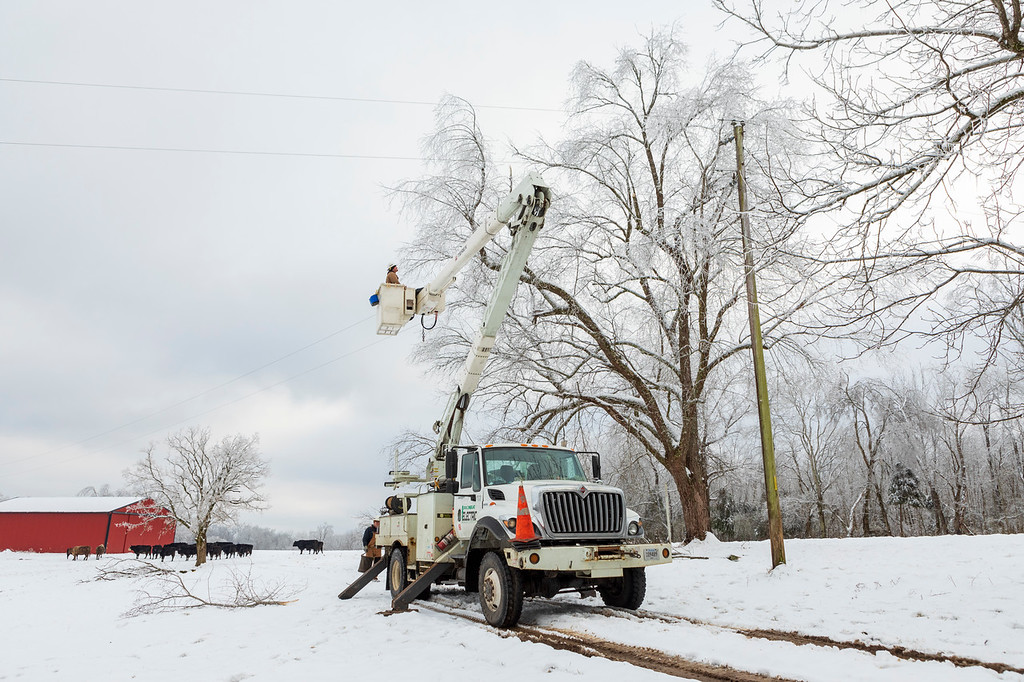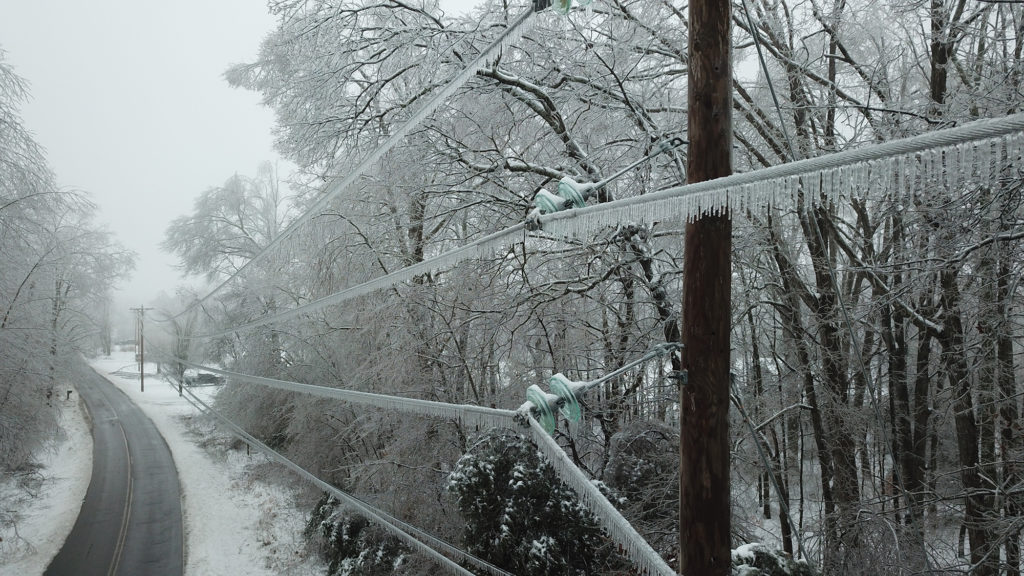
Electric cooperatives in the Appalachian region are still restoring power after back-to-back winter storms that were particularly tough on lines and poles serving members in rugged backcountry terrain.
“It has been many years since Tennessee experienced a winter storm of this severity,” said David Callis, executive vice president and general manager of the Tennessee Electric Cooperative Association. “The amount of ice, followed by days of frigid temperatures, created difficult conditions for both co-op consumers and the crews who worked almost nonstop to restore power.”
The Valentine’s Day storm was followed by additional snow and ice events, pelting co-ops serving members on the Cumberland Plateau, said Trent Scott, the statewide association’s vice president of corporate strategy.
“Early outage figures surpassed 60,000 statewide.” said Scott. “Throughout the week, the weight of ice and snow continued to bring down trees and damage equipment that, in many cases, had already been repaired.”
About 500 members, primarily in mountainous areas of southeastern Tennessee near the North Carolina state line, remained without power Monday.
During the ice events, at least 17% of Duck River Electric Membership Corp.’s 74,000 meters were knocked out repeatedly as trees continued falling into rights of-way and freeze-and-thaw cycles sent branches whipsawing across power lines.
“In total, 172 linemen and 58 tree trimming contractors were on our system working 16-hour days to get members restored,” said Scott Spence, president and CEO of the Shelbyville, Tennessee-based co-op. “Despite dangerous road conditions, falling trees and below-freezing temperatures, they worked tirelessly to ensure the needs of DREMC members were put first.”

Co-ops in mountainous areas of Kentucky experienced similar problems. More than 11,000 co-op-served meters remained out of service Monday as crews continued restoration work in many areas only accessible on foot or with tracked vehicles.
“We had three storms that came through, and, unfortunately, the same portions of eastern and southeastern Kentucky got hammered each time,” said Joe Arnold, vice president of strategic communications for the Kentucky Association of Electric Cooperatives.
Grayson Rural Electric Cooperative Corp. was hardest hit. The mountains, valleys and ravines traversing its territory are heavily forested, so it could take at least another week to complete repairs.
“Only about half of the electric infrastructure is accessible by road. The rest of it takes either hiking, ATVs, drones, or some other means of access,” said Arnold.
“This is the time we have to remind members that that last mile is the most difficult to serve,” Arnold said. “If you are in the most remote areas, restoration of your power could take the longest and be the most difficult.”

In Virginia, most distribution co-ops serving the Blue Ridge region completed restoration work over the weekend, but repairs continued in parts of the service territory of Crewe-based Southside Electric.
“These are the worst icing events they’ve seen in a quarter of a century,” said Steven Johnson, director of member and public relations for the Virginia, Delaware, and Maryland Association of Electric Cooperatives. “Restoration there, in some cases, is going to take up to two weeks.”
With six members per mile of line, crews have had to trek several miles into mountainous, off-road areas, hauling in equipment on tracked vehicles to get power restored to just a few homes or businesses.
“They had to bring in specialized equipment from Pennsylvania just to get a new pole through all the mud and over creeks,” said Johnson. “More than 900 people, including co-op personnel, contractors and extra crews from investor-owned utilities, have been assisting in Southside’s territory.”
In southeastern Ohio, Buckeye Rural Electric Cooperative is also still repairing ice storm damage.
“We’ve got five track machines that are basically like a small line truck and digger trucks on bulldozer treads,” said Kent Eldridge, vice president of member services at the Rio Grande-based distribution co-op.
“We’ve got 130 people assigned to restoration work in the field when we normally have 14 staff to handle our line work and vegetation management,” said Eldridge, adding that full restoration could take another six days. “The Ohio National Guard is also helping us clear debris so we can reach some parts of our service territory where members are still without power.”
Derrill Holly is a staff writer at NRECA.